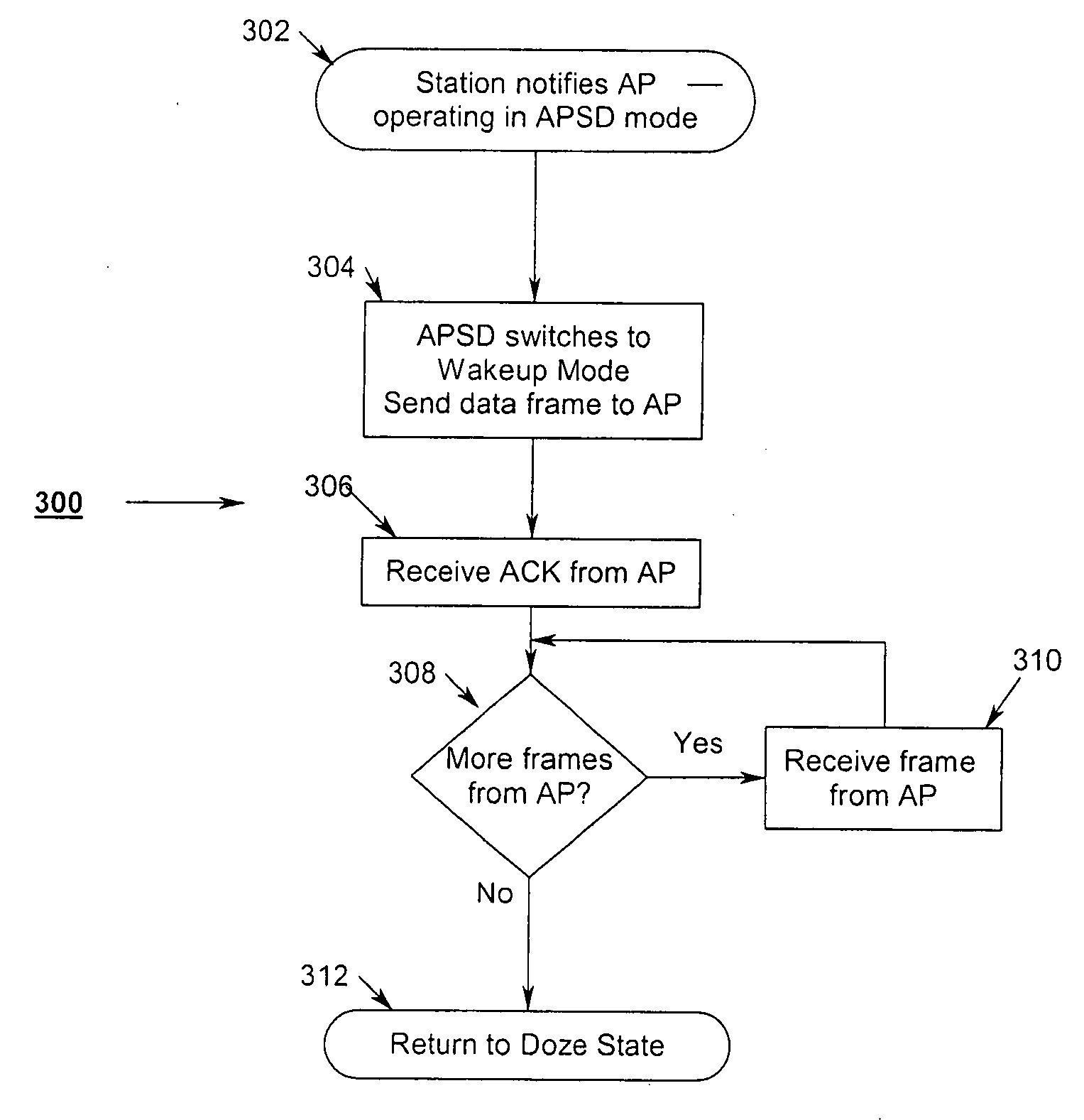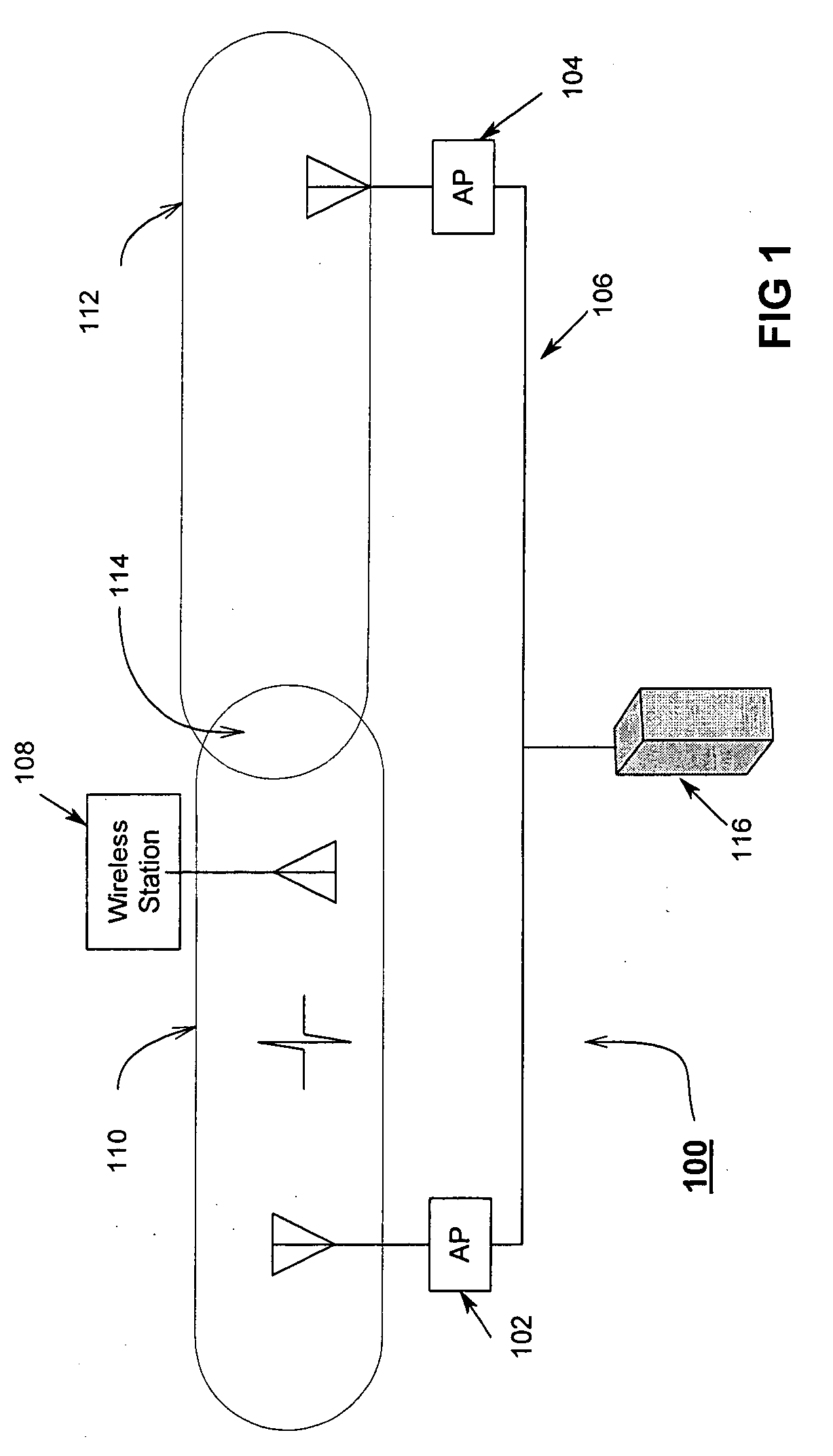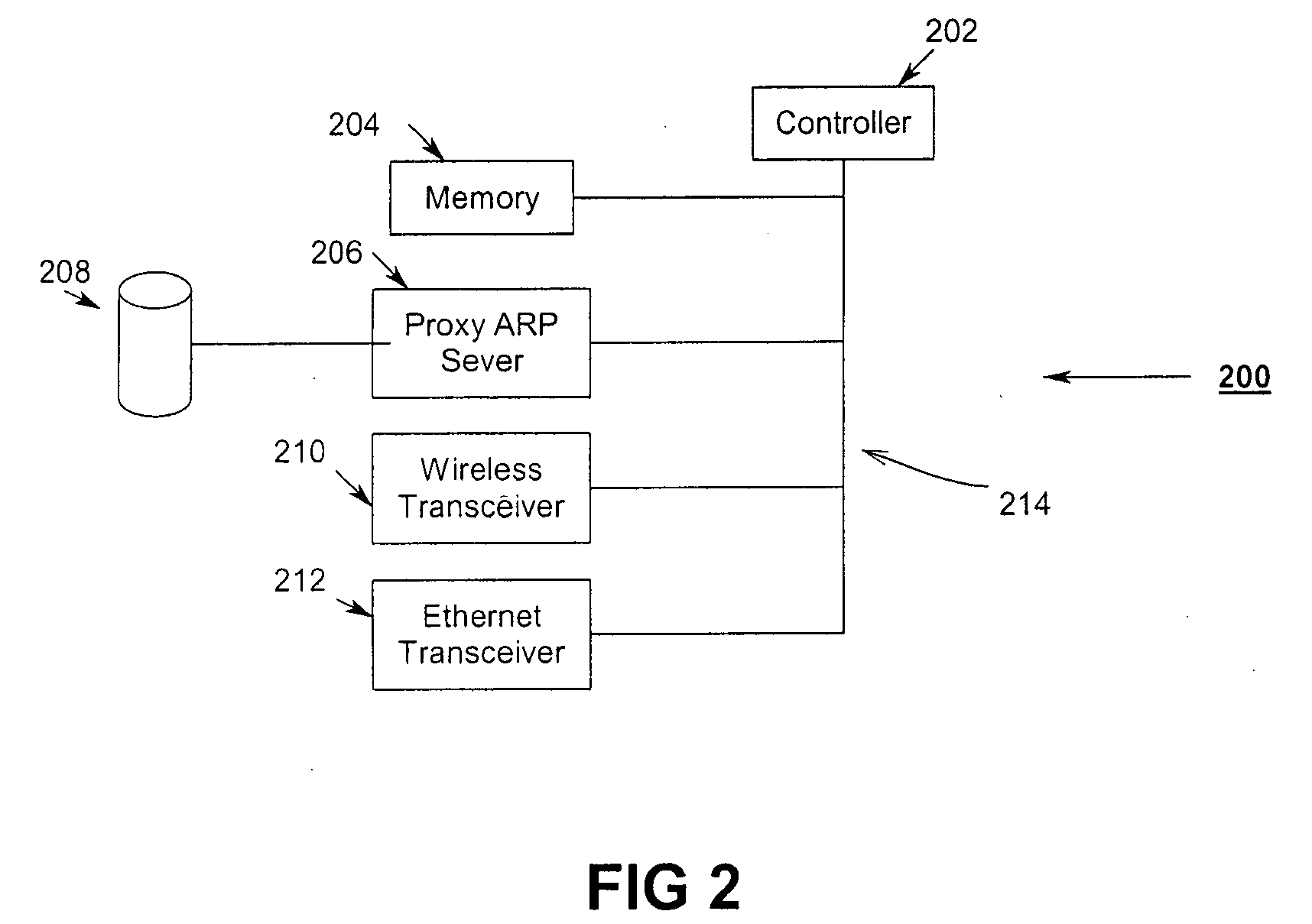Uniform power save method for 802.11e stations
a power saving and 802.11e technology, applied in the field of wireless communication, can solve the problems of unsuitable qos applications, uniform 802.11e power saving methods, and unsatisfactory power saving mechanisms, so as to minimize the time that a station must remain awake and minimize the delay
- Summary
- Abstract
- Description
- Claims
- Application Information
AI Technical Summary
Benefits of technology
Problems solved by technology
Method used
Image
Examples
Embodiment Construction
Throughout this description, the preferred embodiment and examples shown should be considered as exemplars, rather than limitations, of the present invention.
Referring first to FIG. 1 there is illustrated a block diagram of a typical 802.11 network 100. The network 100 comprises two access points 102 and 104. Access Point 102 has a coverage area 110 and Access Point 104 has a coverage area 112. An overlap area 114 exists between coverage area 110 and coverage area 112. A wireless station 108 is shown as being within Access Point 102's coverage area 110. The wireless station 108 may travel between Access Point 102's coverage 110 and Access Point 104's coverage area 112, a process typically known as roaming. Usually when wireless station 108 roams from coverage area 110 to coverage area 112, it will change which access point it associates while passing through the overlap area 114. A backbone 106 is used to connect Access Point 102 and Access Point 104. Typically the backbone is a ...
PUM
 Login to View More
Login to View More Abstract
Description
Claims
Application Information
 Login to View More
Login to View More - R&D
- Intellectual Property
- Life Sciences
- Materials
- Tech Scout
- Unparalleled Data Quality
- Higher Quality Content
- 60% Fewer Hallucinations
Browse by: Latest US Patents, China's latest patents, Technical Efficacy Thesaurus, Application Domain, Technology Topic, Popular Technical Reports.
© 2025 PatSnap. All rights reserved.Legal|Privacy policy|Modern Slavery Act Transparency Statement|Sitemap|About US| Contact US: help@patsnap.com



